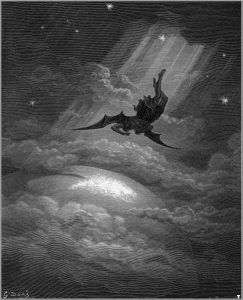While many deny the existence of the devil and demons, those of faith realize that their existence is a real threat to humanity. Many would rather reduce the devil to a myth and as a scapegoat to blame for the evil of humanity. The reality is Lucifer, the first fallen angel, consciously chose self over God. He chose darkness over light and via the absence of good permitted evil to enter into the world through his proud disobedience to God. He then spread his hate and evil to humanity through the tempting of Adam and Eve. Humanity hence learned the capability of evil and sometimes even without Lucifer’s prompting, commits its own heinous deeds. The seed though of all evil is Lucifer.
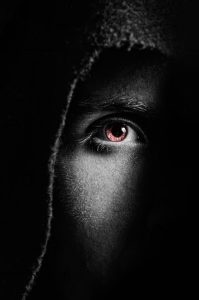
Evil is not a equal choice to good. It is not a rival to good but in essence is a lack of good. It is the lack of goodness in an action. God did not create evil, but evil was a conscious choice by sentient beings to dismiss God. Like fallen angels, humanity also chooses evil at times but unlike fallen angels, humanity is not totally corrupted but has opportunity to repent from evil. The demons fully understood their choices, while humanity, lacking angelic intelligence, learns from mistakes and hopefully chooses good. Humanity in its current fallen form is far weaker than their angelic siblings, The angels, both good and evil, have great intelligence and as pure spirit possess far greater abilities that fallen humanity.
Demons look to corrupt the goodness of God’s creation. They seek revenge upon God by corrupting humanity. If not for God, they would devour humanity, but Christ’s death on the cross preserved humanity from the sin of Adam and dark control of Lucifer. Through Christ and His sacrifice, humanity has access to grace, the sacraments, and spiritual protection against the demonic. Through Christ, power has been given to His followers to cast out demons via His Blessed Name.
Temptation
The most basic and common form of demonic activity is in the form of temptation. Temptation is an outside source beyond our own fallen nature. It is not our passions alone desiring something illicit and illusionary as good, but an outside force pushing one towards it. Demonic temptation hence is different than our own fallen temptation and inclination to sin. Demonic temptation can be seen in Scripture, where Lucifer tempted Christ in the desert. Christ, as the ultimate paradigm, teaches the importance of rebuking Lucifer or whatever demon may be tempting oneself. One of the most famous literary works on temptation is C.S. Lewis, “Screwtape Letters” in which the demon, Wormwood, writes to hell about his temptation and workings against a simple man. In the work, Wormwood plays off daily frustrations to try to turn the man away from goodness, even if in the most minute form. Ultimately, Wormwood fails in his endeavor to corrupt the man but the Lewis helps expose the inner workings of demonic temptation in a daily basis. This is why in the “Our Father”, Christ reminds us to pray, “And lead us not into temptation but deliver us from evil”.
While it may be easy to blame Satan for everything, one still must take moral responsibility for one’s actions. One should develop a strong moral conscience in accordance with God’s law and enforce moral decisions based upon the teachings of Christ. Whether it is one’s own internal passions, or demonic whispers, one is called to be accountable for oneself and choose good over evil.
Demonic Obsession
A more intense demonic presence beyond the whispers of the devil is actual metaphysical presence in the world. Demonic obsession and manifestations occur to both good and bad people and have different intents and purposes. In the case of a saint such as Padre Pio, the obsession is one of hate, fear, and punishment. St Padre Pio or even St John Vianney enraged the demons so much as to produce their manifestations. Padre Pio accounted to be being beaten by demons, while St John Vianney related to the shaking of his bed. God permitted these actions for His greater glory and victory of His saints over the demonic and these saints willingly entered into spiritual warfare with the demonic for the greater glory of God.
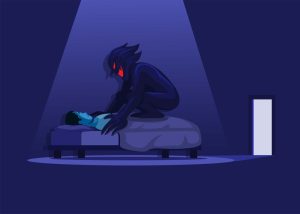
In some cases though, the intent is not one of punishment or anger, but desire to control. Those who foolishly partake in the occult or expose themselves through New Age methods of meditation or out of body experiences endanger themselves to the metaphysical world of the demonic. This is why Scripture warns individuals to avoid spiritualists, the occult and its tools. Those who brazenly and without fear play the Ouija Board, partake with spiritualists, play tarot cards, attend occult functions, or attempt to control demonic beings via witchcraft open themselves to demonic presence at a more intimate level.
Others who attempt to disturb haunted sites or play with haunted artifacts with known demonic attachments, also risk the chance of more demonic attention in their lives. Demons can attach to a variety of objects to remain in the temporal realm. This is illustrated in the case of Christ exorcising the demons, Legion, from the man into the herd of swine. Instead of returning to Hell, they pleaded with Christ to be sent into the swine herd. In this way, many demons remain attached to the temporal realm via cursed objects. An object that has a demonic attachment that finds its way into one’s home can cause hauntings and obsessions.
Others can find themselves victims of demonic obsession via curses. Those in witchcraft and the occult can place a curse over someone. This not a magical curse but a malicious prayer and offering to the demonic. As Christians prayer for God’s presence over loved ones, the occult can curse one with the presence of the demonic. The demonic is then focused upon the particular individual and a type of physical haunting or obsession can begin. In essence, demonic obsession is the haunting of a particular person instead of a place or thing. The purpose is to inflict pain, fear, punishment, or dominion via possession.
Signs of obsession, or oppression, include lucid dreams of the demonic, mental images of the demonic and in some cases apparitions of the demonic. Initially various hauntings will occur with sounds, knocks, laughs, or even physical markings on the body. In addition, mental illness, depression and physical symptoms may develop from the stress of the obsession. Also, many experience unfortunate events surrounding their lives. Some of these things obviously are coincidence but when they are all added together, and after all medical and scientific explanations are left unanswered, it is best then to take proactive action.
Obviously, those closer to God are safer from curses. Naturally, the spiritual hygiene of a religious person is greater than a non-religious person. A religious person is closer to Christ, attends Mass or Service, prayers regularly, reads Scripture, receives the sacraments, wears sacramentals, blesses their home, and adorns the home with images of Christ. These are powerful things to consider in any demonic attack. Hence when one finds oneself against these odds, it is critical to turn to Christ, His Mother, and the rituals of the Church and its many sacramentals to protect oneself. Blessing the home, wearing the cross or scapular, placing the St Benedict Medal throughout the home, and performing a minor exorcism of the home are important acts against demonic obsession.
Through one’s Baptism and the authority of Christ, one can in Christ’s name, command demons to leave one’s property. The ritual of minor home exorcism is a loss art among Christians. Seen as superstitious medieval, the scientific mind prefers to explain the demonic away. Yet, Christians are constantly in Spiritual warfare and must engage the enemy. By blessing the home with Holy Water and pronouncing the name of Christ in each room for all evil to depart is a powerful weapon of Christians against Satan. Symbolically, the doors and windows should be left open for all negative and demonic energy to leave the home. Assisted with the words of Christ, blessed water and a lighted candle, Christians can defend their own home. In greater cases, a minister or priest may be needed but for most cases, the Christian can defend his or her own home through the authority of Christ.
Demonic Possession
Throughout Scripture, possession is a common occurrence. Christ exorcizes multiple demons from individuals through the New Testament. He also gives the apostles and disciples the same power in His name to case out demons. In particular, Christ emphasized the importance of fasting and purity. When the apostles were unable to cast out a certain demon, He reminded them of the need of fasting.
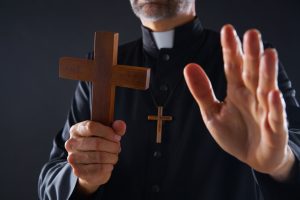
While many so-called possessions were in fact mental disorders in the past, the Church still recognizes the reality of demonic possession. After intense clinical investigation, the Church will determine if the person is possessed or mentally ill. Cases such as Schizophrenia are quickly dismissed in the modern era, unlike the past, and with proper medical and clinical evaluation, anyone with mental illness can easily be distinguished from a true possession case.
Possession in itself is domination. The demon looks to exert its will over the human person. Some particular demons hope to utilize the vessel to experience sin, others look to torment the soul. Possession can be imperfect or perfect. In imperfect state, the soul is still fighting the dominion of the evil spirit, while in perfect possession, the soul has accepted its Satanic counterpart. In the occult and other Satanic circles, many seek this type of sick union, in corruption of the union Christians seek with God. Unlike union with God, which is holy and pleasing and respectful of autonomy, possession is vile and evil and domination of one over the other.
The soul that is possessed usually became possessed through foolishness or weakness. Certain acts, or opening oneself without knowledge of consequences can lead to the ultimate possession of a person. In Malachi Martin’s “Hostage to the Devil”, the now deceased author accounts 5 cases of demonic possession. In most of the cases, the individuals were naive to the dangers or performing deeds in the occult. Only after the trap was set did these individuals realize the danger they were in and sought help.
In demonic possession, the person’s moods can change drastically. They are commonly severely depressed and suicidal. They perform gross and disgusting deeds and can become dangerous if provoked. Some exhibit extra human strength and while under possession know other languages. Within the room, like any case of obsession, the demonic possessed can levitate, contort one’s body, cast objects, or lower the temperature of the room. While the movie, “The Exorcist” embellishes exorcism, one need not need special horror effects or embellishment to terrify oneself through the witnessing of a true exorcism within its own right. In fact, what makes the movies “The Exorcist”, or “The Conjuring” so terrifying is that they are based on a foundation of reality. If anything, these movies open a greater awareness and belief in the devil’s existence which is good.
The Rite of Exorcism finds it power from the authority Christ gave to His apostles to cast out demons. It has developed over the centuries to include a multitude of prayers invoking Christ, the Blessed Virgin and St Michael. The ritual is a pastoral ministry carried out by the local diocese and assigned to a particular priest. The process involves the concerned party calling the diocese and reporting demonic activity. After all scientific and medical explanations have been investigated, the assigned exorcist priest will interview the possessed and assign a particular day for the ritual. The priest will be accompanied by a few aides to ensure safety of the possessed and those performing and witnessing the rite.
The ritual is a battle of wills between the priest and the demon. The demon will mock, expose sins, intimidate and blaspheme throughout the process but the priest must maintain focus. The priest must realize it is through Christ and not his own words that this demon will be cast away. One of the key stages is forcing the demon to expose himself and present its identity. The priest will then continue to command the demon to the leave the person. This can take hours or even days. Circumstances surround the piety of the priest, the proper execution of the rite, the will of the possessed person to be free, and the power of the individual demon. Obviously, an exorcist priest is a special calling. Many are called to a special devotion to Christ to fulfill this calling. Many also do not live long lives due to the trauma they witness.
Conclusion
Unfortunately, some dioceses infected with secularism have dismissed the office and it can be sometimes hard to find a priest equipped with this particular training. Furthermore, the exorcism cannot be performed without the consent of the local bishop of the area it is being conducted. So the pastoral ministry against the demonic weighs heavily upon the bishop. Dioceses with an exorcist priest and department that deals with this type of pastoral ministry is greatly needed at a higher volume than it is currently. Demonic activity is growing as the faith continues to recede among the secular population. Many individuals come across the demonic without knowing and need assistance from trained and spiritual people.
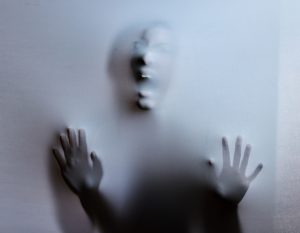
Christian Counselors should never conduct an exorcism. Simple exorcism of a home or blessings are fine but if confronted with the possessed or suspecting of the possessed, it is important to refer this person not only to a mental health professional for evaluation but also to the proper spiritual authorities. Many who attempt exorcisms can be harmed both physically and spiritually.
Please also review AIHCP’s Christian Counseling Certification and see if it matches your academic and professional goals. The program is online and independent study and open to qualified professionals seeking a four year certification in Christian Counseling.
Additional Resources
“An Exorcist Tells His Story”. Fr. Amorth, G. (1999). Ignatius Press.
“Hostage to the Devil”. Martin, M. (1992). Harper One.
“Is there demonic activity in the world today?”. Compelling Truth. Access here
“Demons and How They Influence Mankind”. Cook. S. (2020). Thinking on Scripture. Access here
“Exorcism – how does it work and why is it on the rise?”. Lam, V. (2018). The Conversation. Access here

